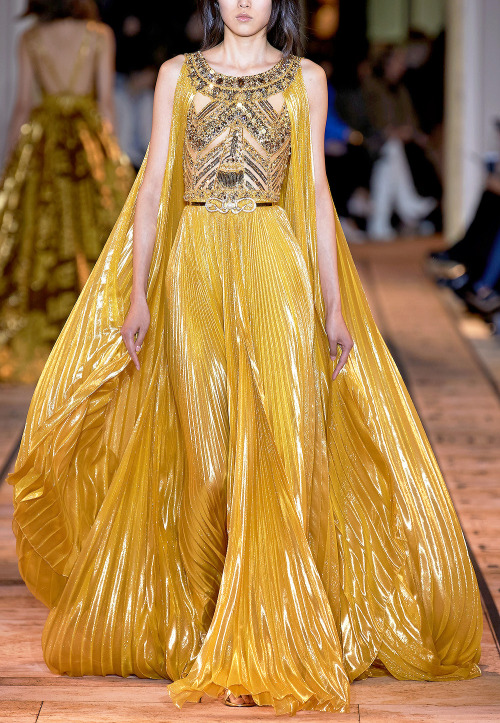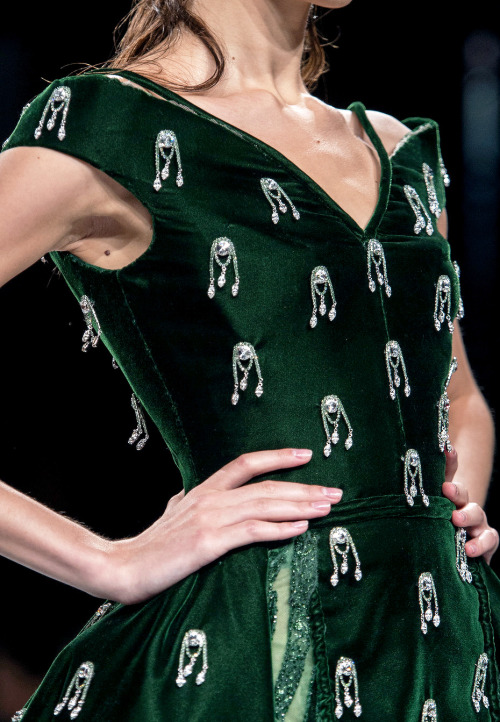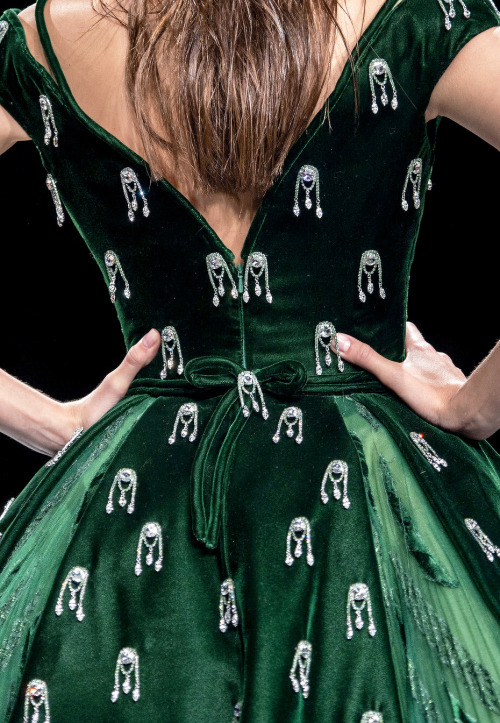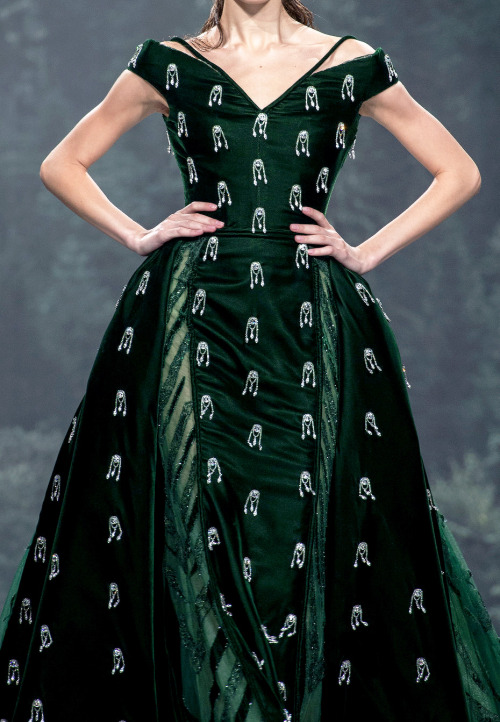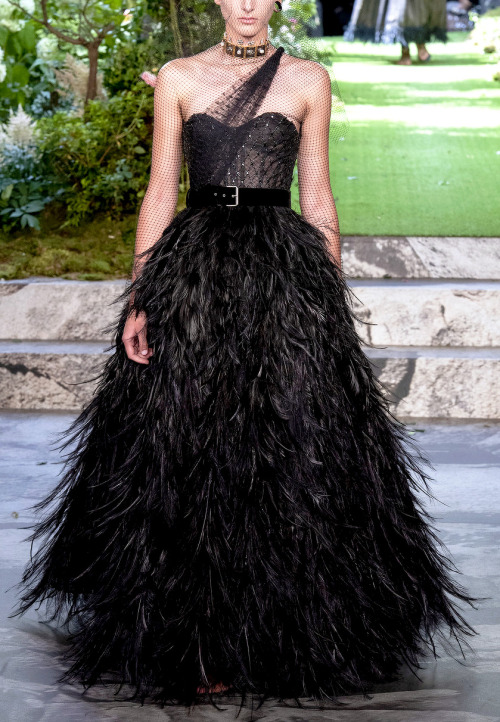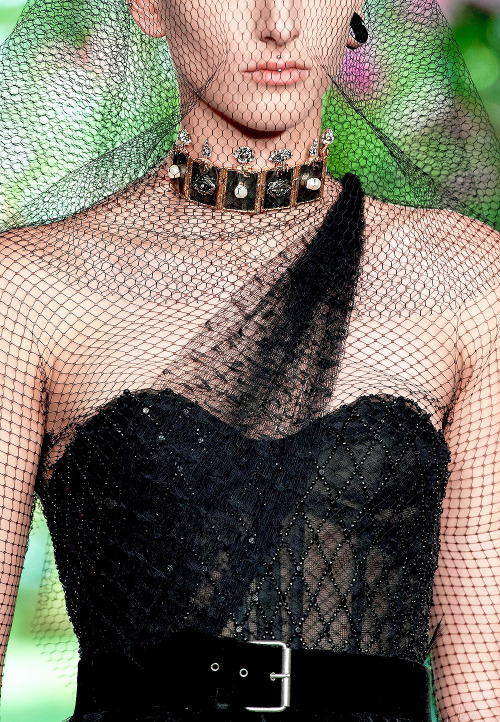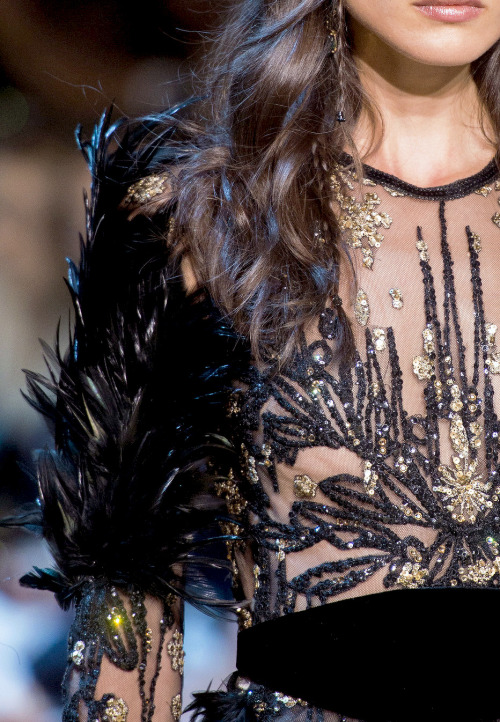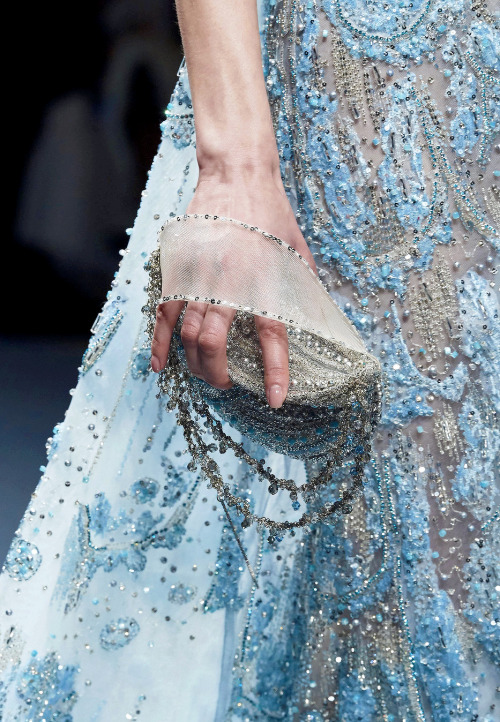#mythologyedit
Milda was the goddess of love, courting, friendship and freedom in Lithuanian mythology. She was the worst enemy of loneliness and was often portrayed as a woman who drove a chariot pulled by doves. Milda also liked to ride naked, causing hearts to flutter and it was rumoured that one glimpse at her delightful vision wafting down the street meant that you were mere seconds away from love, romance and all the other stuff you’d been waiting for. Apparently she didn’t care about marriage. In her eyes, matrimony was secondary to love and friendship. To her worshippers she represented freedom. The female figure at the top of the Freedom MonumentinRiga is affectionately called ‘Milda’, because the model for the sculpture was a Lithuanian woman named Milda Jasikienė who lived in the city.
(Marchesa Spring 2016 Ready-to-Wear Collection)
Post link
Inanna was the goddess of war, sex, and the dispensation of justice in the ancient kingdom of Sumer in Mesopotamian mythology. One particular Sumerian hymn details how she became a goddess of sexual love, particularly for women. In the story, Inanna asked her twin brother Utu(god of the sun) to accompany her to a magical place called the Kur, where sacred plants grew because she was forbidden from traveling alone. When they arrived, she wanted to eat a sacred fruit of knowledge so that she could learn the secrets of intimacy, telling Utu “What concerns women namely, men I do not know. What concerns women lovemaking I do not know.” Utu relented and allowed her to eat the fruit, and so Inanna then became aware of the power of her own sexuality. Over time though she merged with the figure of Ishtar in the ancient world, and they are often portrayed as one and the same.
(Zuhair Murad Spring 2020 Haute Couture Collection)
Post link
Venus(meaning‘love’) was the goddess of love, maternal care, sexual reproduction, and erotic desire in Roman mythology. The loveliest of all deities, Venus desired and was desired by mortals and gods alike. As the goddess of love and sex, she possessed the ability to make mortals and gods fall madly in love. Venus’ chief weapons were her charm and erotic appeal, and in her mythological tradition, many fell victim to them. Like Apollo(Greek god of prophecy), Venus had a fluid sexuality and embraced male and female lovers alike. She was also the guardian of lovers and prostitutes, and a major figure in Roman religion. Venus was adapted from Aphrodite(Greek goddess of love), with whom she shared a mythological tradition.
(Ziad Nakad Spring 2020 Haute Couture Collection)
Post link
Vesta(meaning‘to dwell’) was the virginal goddess of hearth and home, family life and child-rearing in Roman mythology. She oversaw all aspects of home life, ensuring the sanctity of the house and securing its tranquility. Despite her seeming lack of mythological presence, Vesta’s enormous power over family, marriage, and children protected the moral integrity of all Romans. For this reason, all prayers and sacrifices began and ended with devotions to Vesta. She remained a virgin throughout her mythic existence, took no lovers, and bore no children. Vesta was adapted from Hestia (Greek goddess of the hearth) with whom she shared a mythological tradition.
(Elie Saab Spring 2020 Haute Couture Collection)
Post link
Pasithea(Πασιθέα, meaning ‘relaxation’) was the goddess of relaxation, meditation, hallucinations and all other altered states of consciousness in Greek mythology. She was also one of the Charities (Graces) which were believed to be the daughters of Zeus(king of the gods). As a minor goddess, the only real tale where she shows up is in the story where Hypnos(god of sleep) decides to help put Hera(queen of the gods) to sleep so that Zeus can get up to one of his many schemes. As a reward for his services, he gave Pasithea his daughter, to Hypnos in an Olympian marriage.
(Zuhair Murad Spring 2022 Haute Couture Collection)
Post link
Lofn was the goddess of forbidden loves in Norse mythology. Her name possibly meant ‘comforter’or‘loving’ and she could be invoked to get rid of the shame around one’s forbidden desires. Lofn also facilitated lovers coming together, and protected them from the wrath of others. Whilst she may not have changed the minds of those who disapproved, she helped star-crossed lovers find a way to be together safely and helped create their own hearth where the vision was more tolerant. In chapter 35 of Prose Edda she was described as “She is so gentle and so good to invoke that she has permission from All-FatherorFrigg to arrange unions between men and women, even if earlier offers have been received and unions have been banned. From her name comes the word lof, meaning permission as well as high praise.”
(Elie Saab Fall 2017 Haute Couture Collection)
Post link
Caer Ibormeith was the goddess of dreams and prophecy in Celtic mythology. She was also a daughter of Prince Ethal Anbuail of Sid Uamuin in Connacht. In Óengus’s(god of love) dream, which lasted over a year, Caer Ibormeith stood beside his bed though when he reached out for her, she would disappear. Every alternate Samhain she would turn to human form for one day, which began at sunset, and after that, she would revert back into being a swan, for another year until the following Samhain. Óengus went in search for this girl in his dreams at the lake of the Dragon’s Mouth and found 150 girls chained in pairs, Caer Ibormeith was among them. He was told he could marry her if he could identify her in her swan form. Óengus chose correctly and with that he turned himself into a swan and they flew away together. The pair sang beautiful music as they went, that put all listeners throughout Ireland to sleep for three days and nights.
(Georges Hobeika Fall 2018 Haute Couture Collection)
Post link
Themis(Θεμις) was the Titan goddess of divine law and order of the traditional rules of conduct first established by the gods in Greek mythology. She was also a prophetic goddess who presided over the most ancient oracles, including Delphi. In this role, she was the divine voice (themistes) who first instructed mankind in the primal laws of justice and morality, such as the precepts of belief, the rules of hospitality, good governance, conduct of assembly, and pious offerings to the gods. Themis was an early bride of Zeus(king of the gods) and his first counsellor as well as mother to The FatesandThe Horae. She was often represented seated beside his throne advising him on the precepts of divine law and the rules of fate. In Greek, the word ‘themis’ referred to divine law, those rules of conduct long established by custom. Unlike the word ‘nomos,’ the term was not usually used to describe laws of human decree.
(Zuhair Murad Spring 2013 Haute Couture Collection)
Post link
Coyolxāuhqui (pron. Koy-ol-shauw-kee) was the goddess of the moon in Aztec mythology. On the summit of Coatepec(Serpent Mountain), sat a shrine for Coatlicue(mother of the gods). One day, as she swept her shrine, a ball of hummingbird feathers fell from the sky. She snatched them up and became pregnant with the Aztec deity Huitzilopochtli(god of war). Hearing of the pregnancy Coyolxāuhqui led her brothers known as the Centzon Huitznahuas(Four Hundred Huiztnaua) in attack against their mother. However the attack was thwarted when Coatlicue miraculously gave birth to a fully grown and readily armed Huitzilopochtli. He killed his older sister by beheading her and throwing her body down the side of Coatepec and then scattered his brothers in all directions pursuing those who escaped relentlessly for years. Some authors have written that Huitzilopochtli tossed Coyolxauhqui’s head into the sky where it became the moon, so that his mother would be comforted in seeing her daughter in the sky every night, and that her scattered brothers later became Southern Star deities.
(Georges Hobeika Fall 2018 Haute Couture Collection)
Post link
Sekhmet(meaning‘She Who is Powerful’) was the goddess of the hot desert sun, plague, chaos, war, and healing in Egyptian mythology. She was born from the fire Ra’s(god of the sun) eyes as well as created as a weapon to destroy humans for their disobedience to him and for not living in accordance with the principles of Ma’at(goddess of justice). Sekhmet was a rather terrifying goddess, however for her friends she could avert plague’s and cure disease. She was the patron of physicians and healers and was seen as the protector of the pharaohs and led them in warfare. When she was in a calmer state she would take the form of the household cat goddess Bast. The ancient Egyptians believed that Sekhmet had a cure for every problem. In order to stay on her good side, they offered her food and drink, played music for her, and burned incense. They would whisper their prayers into the ears of cat mummies and offer them to Sekhmet. They believed that this was a direct connection to the deities and their prayers would be answered.
(Zuhair Murad Spring 2020 Haute Couture Collection)
Post link
Juno(meaning‘Youth’) was the goddess of marriage, home, and family as well as queen of the gods in Roman mythology. She was a champion of women and protector of the Roman state. She was also married to Jupiter(king of the gods), and served as a part of the divine ruling triumvirate known as the Capitoline Triad. Another aspect was that she was also considered a moon goddess, likely for her association with the waxing and waning of the celestial body, which in turn symbolised the cycles of growth and decay that defined all of existence. The fluidity of her identity made her one of the most broadly worshiped Roman deities, as is evidenced by the huge number of temples built in her honour and festivals held in her name. She was adapted from the Greek goddess Hera, and her essential characteristics and mythology were nearly identical to her Greek predecessor.
(Ziad Nakad Fall 2017 Haute Couture Collection)
Post link
Nāmaka(or Nā-maka-o-Kahaʻi, the eyes of Kahaʻi) was the goddess of the sea and older sister of Pele (goddess of volcanoes) in Hawaiian mythology. Like most sisters, the two were polar opposites. According to ancient legend, Nāmaka was married to a mighty sorcerer, Aukelenuiaiku. Upon meeting him she was impressed by his warrior spirit and showed him all her forms and taught him about her magical powers. But easily swayed, Aukelenuiaiku was seduced by her younger, beautiful sister, Pele. He ended up betraying Nāmaka by taking Pele as his wife. Overcome by rage, she sent high tides and floods to destroy Pele’s home. Pele and her family fled, but could not escape her sister’s wrath. Everywhere that Pele opened a crater for her volcanic fire to rest, the smoke would signal Nāmaka of her whereabouts. She followed Pele throughout the Hawaiian Island chain, until Pele finally settled in the high mountains of Mauna Loa, which proved too high for the ocean’s waves to reach. Pele then gained enough confidence to continuously battle Nāmaka. To this day, Pele’s eruptions from Hawaii Island’s volcanoes flow thick and hot till they reach the sea symbolising the match in strength between the sisters of fire and water.
(Zuhair Murad Spring 2019 Haute Couture Collection)
Post link
Selene(Σελήνη meaning‘Moon’)was the Titan Goddess of the moon in Greek mythology who was renowned for driving her moon chariot across the heavens. One of her great loves was with a shepard prince called Endymion who was granted eternal youth and immortality by Zeus(king of the gods) who then placed him in a state of eternal slumber in a cave near the peak of LydianMount Latmos. Each night Selene would visit him when the moon came down from the sky where she would consort with him because she couldn’t bare the thought of him dying.
(Georges Hobeika Fall 2018 Haute Couture Collection)
Post link
Brigid (‘The Exalted One’) was the flamed haired goddess of spring, fertility and life in Celtic mythology. Beloved by poets, she was also the master of both healing and smithing. Her holiday, Imbolc(Saint Brigid’s Day), was held on February 1st which marks the midway point between the winter solstice and the spring equinox. Like The Morrígan, some believed Brigid was once a triple deity.
(Valentino Spring 2015 Haute Couture Collection)
Post link
Jiutian Xuannü(九天玄女) was the goddess of war, longevity, and sex in Chinese mythology. She possessed magical powers, and had the ability to render herself invisible. She even had the ability to turn the stars surrounding the Big Dipper into warriors that she would use to defend China if the need should arise. Her name is comprised of two phrases:jiǔtiān(九天), which means ‘nine heavens,’andXuán nǚ(玄女), which means ‘mysterious woman.’ Together her name translates to ‘Mysterious Woman of the Nine Heavens.’
(Elie Saab Fall 2019 Haute Couture Collection)
Post link
Loki(‘Close’ in Old Norse) was the trickster god of mischief and mayhem in Norse mythology. They were also a shapeshifter who took on various forms that motivated their devious nature which included wealth, women, wisdom, and the sheer pleasure of their knavery. Loki’s appearances were never quite what they seemed and whilst their antics frequently embroiled the gods in sticky situations, their tricks often rescued them from troubled times as well.
(Ziad Nakad Fall 2018 Haute Couture Collection)
Post link
The Morrígan (Mórrígu)was the goddess of death and destiny in Celtic mythology. Appearing before great battles she offered prophecy and favour to heroes and gods alike and would often circle the battlefield as a conspiracy of ravens to carry away the dead. Her name translated to ‘great queen’or‘phantom queen’ and was once both a single and a triple deity, made up of Ireland’s most powerful goddesses.
(Christian Dior Fall 2019 Haute Couture Collection)
Post link
Nótt was goddess of the night in Norse mythology and the grandmother of Thor. Nótt is listed as the daughter of Nörvi and is associated with the horse Hrímfaxi. Nótt had three marriages. Her third marriage was to Dellingr(God of the dawn) and this resulted in their son Dagr(God of the day). As a proper noun, the word ‘nótt’ appears throughout Old Norse literature.
(Elie Saab Fall 2017 Haute Couture Collection)
Post link
Nut(Nwt) was the goddess of the sky, stars, cosmos, mothers, astronomy, and the universe in the ancient Egyptian mythology. In one myth she gives birth to the Sun-god Ra daily and he passes over her body during the day before being swallowed at night only to be reborn the next morning. In time she gained the title ‘She Who Holds a Thousand Souls’ because of this she became a key god in myths about the afterlife. Nut was also described as being covered in stars touching different points on her body thus resulting in her earning another title ‘Coverer of the Sky.’
(Zuhair Murad Fall 2015 Haute Couture Collection)
Post link
Vellamo was the goddess of water, lakes and seas in Finnish mythology. She was said to be tall and beautiful, and was respected by fishermen, who prayed to her for good fishing luck. Vellamo could also control the winds to help sailors, and also controlled the storms and waves. She wore a blue dress made from sea foam. Her name comes from the Finnish word ‘velloa’, which means ‘movement of water and waves.’ She was also often depicted as a mermaid.
(Ziad Nakad Spring 2019 Haute Couture Collection)
Post link








































